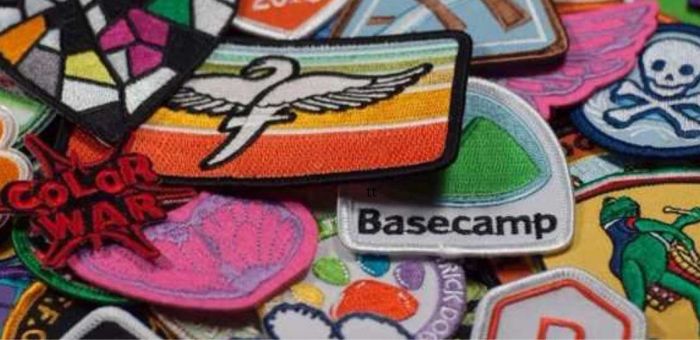Have you ever been amazed to watch embroidered patches becoming widely popular? Also, have you ever thought of making your own embroidered patches that are according to your style and fashion preferences? If yes, then keep scrolling.
Embroidered patches are a creative way of sharing a piece of yourself with the world. They are easy to attach to jackets, backpacks, caps, and other accessories. These patches show your fashion taste and reflect your artistic personality.
Patches are a great way to add class and elegance to any garment. Embroidered patches are versatile and add compactness to any garment you have attached them to. There are different types of embroidered patches with different types of backing it depends on your choices and preferences what type you want.
If you are looking forward to creating astonishing embroidered patches for yourself then you need to pay attention to some important elements. For your assistance, we have mentioned all these factors below.
Some Effective Techniques For Crafting Embroidered Badges
So, you love to attach Custom embroidered patches to your garments and other accessories, right? But, you need to be careful while personalizing your embroidered patches. Let’s dive into these important details.
- Go Bold
Try to create your text and design as bold as you can. If you are thinking of adding some fine, small, and delicate text to your patch then it is difficult to create with traditional embroidery procedure. The most difficult part of creating an embroidered patch is this. So, be careful with the size of your text make sure it is thick and big as much as it can be. In this way, you will create a more appealing patch.
- Contrast
Pick contrasting colors because they make your patch stand out. Undoubtedly, the classiest combo for your patch is black and white. This is the most popular combo and people love to wear patches in this comb. Some other combos that you can try are black and yellow, red and blue, pink and green, etc. There are several other options that you can try and show your creativity.
- Border
A good border is a definition of a perfectly finished patch. A border is what properly frames your patch and it also helps in clearing up the badge to loose threads. Try to choose the color for your border that compliments your entire patch. Try to look at different patches for ideas.
- Simple
Have you ever thought of designing on a glass plate with a thick tip pen? This is what exactly it feels like to design an embroidered patch. So, keep your patch as simple as you can. But, don’t panic if you have intricate details on your patch you ask for professional assistance for it.
- Size
The bigger the size of your patch the more it is simple to create a complex design. The more space your patch will have the more details it can cover. So, opt for large-size patches to put all your desired details on it.
- Stitching
If you have a simple patch that does not incorporate any complicated details then you can opt for stitching. If your patch has small details it might cause some difficulties at the time of stitching. You can also opt for other alternatives to stitching.
- Shape
Do you desire to be the unique one in the crowd? If yes, then opt for some unique shapes. Don’t go for traditional shapes like squares, circles, rectangles, etc. Try to choose something that appeals to the eyes of others.
- Patch Backing
Okay, so here’s the most important element that you need to consider when creating your badge. There are different types of backing sew-on, iron-on, etc. The choice of backing depends on the area or garment you will attach your patch.
- Quality
Quality over everything. No matter how appealing your design is you need to ensure the quality of your patch first. Along with the quality of the patch you need to be careful about the fabric and make sure it is durable and long-lasting.
- Feedback
Before finalizing your patch design ask your family, employees, and friends. They will provide you with a deep insight into your patch and can help you make necessary changes in your patch.
So, these are a few elements that you need to consider while designing your patch. If still, you still need assistance in designing your embroidered patch then, you can ask any service-providing agency that offers assistance in Custom Canada Patches.
Frequently Asked Questions
- What are some mistakes that you need to avoid while designing custom embroidered patches?
Not considering the shape and size of the patch is one of the most common mistakes. If you choose the wrong size and shape your patch might look cluttered or disproportionate.
- How to make custom patches?
Firstly, you need to cut the backing according to the shape of your patch. To avoid fraying, edges are hot-sealed. After hot sealing, start stitching with thread to maximize the security. Some designs include backing as the background of the patch while others cover the back with stitches.
- What are the best materials for embroidered patches?
While several fabrics are best for embroidered patches. Wool is amazingly versatile and provides solace. The fiber of wool does not shrink or stretch over time. Even after many washes, the patch remains lustrous, beautiful, and soft.
- How can I style an embroidered patch?
There are various methods of styling a patch on different garments. Below are a few for your guidance.
T-shirt: If you desire to refine your t-shirt then add an embroidered patch on the front pocket of your t-shirt.
Shorts: you can place appealing patches on your shorts to make them look more unique.
Bag: If you love decorating your accessories then don’t forget to add patches to your bag to make it look appealing.
The Ending Notes
So, this is all that you need to know about customizing your own embroidered patches. We hope these tips will assist you in making your patch. All the above-mentioned techniques will result in an amazing patch. Designing depends on your placement and concept. You need to consider these crucial elements shape, size, and quality. Choose the right backing for your patch according to the surface where you will place it.

